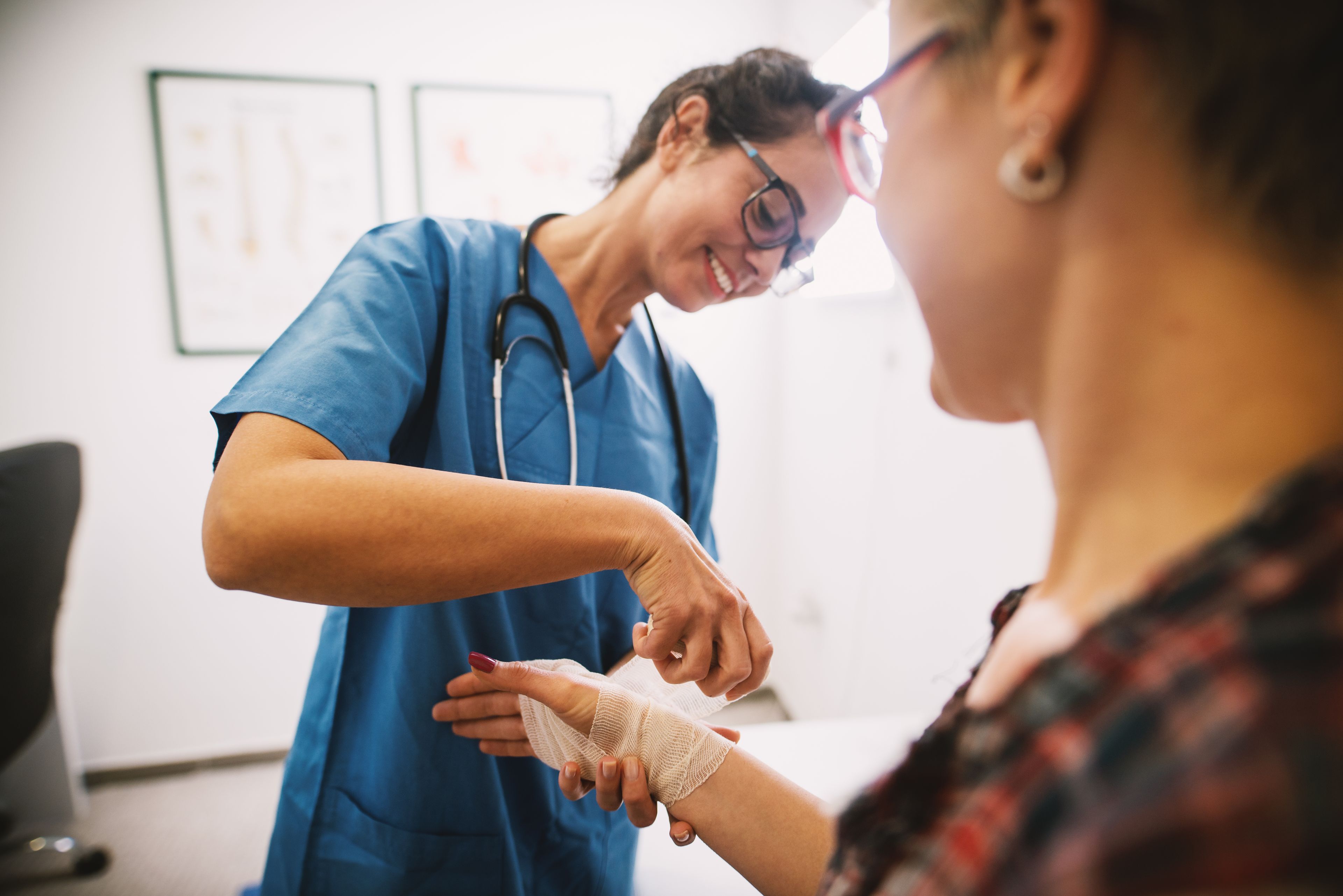
Patients
Caring For Your Burn Care
Burn injuries can affect many layers of the skin, and recovery often involves ongoing wound care and, in some cases, surgery.
Learn about common types of burns, treatment options like skin grafts, and what to expect as your skin heals.
Find a Burn Center Near You
Types of Burns
Skin Graft Surgery
Skin grafts are used when burns are too deep to heal on their own. During this procedure, dead tissue is removed and replaced with healthy skin from another part of the body (a donor site). You’ll receive anesthesia during surgery, and the graft will be covered with a dressing while it heals.
Types of Skin Grafts
Taking Care of Healing Skin
Once the skin has closed, ongoing care can make a difference in your comfort and recovery:
Moisturizing
Keep newly healed skin well-moisturized to reduce itching, improve comfort, and support movement. Choose unscented products and apply them multiple times a day. Creams (from tubes or jars) are thicker and last longer, while lotions (in bottles) are easier to apply but may need more frequent use.
Moisturizing is also a good time to gently touch or massage your scars and do stretching exercises. Ask your provider for guidance.
Blisters, Skin Tears, and Ulcers
Healing skin is fragile. Tight clothing or accidental bumps can cause blisters or skin tears.
Blisters: Use a sterile needle to gently drain. Cover with antibiotic ointment and a nonstick dressing.
Skin tears: Apply pressure if bleeding, clean with soap and water, then use a clean dressing and ointment.
Ulcers: Scar tissue in areas like the elbows or knees may crack during movement. Keep the area covered and moisturized.
Allergic Reactions
If your skin reacts to a product, stop using it for a few days. Gradually reintroduce one product at a time to identify the trigger. Let your provider know if symptoms persist or worsen.
What You Can Do
Ask questions and stay involved in decisions about your care
Follow instructions for wound cleaning and dressing changes
Keep skin clean, protected, and moisturized
Avoid scratching, bumping, or rubbing healing areas
Talk with your care team about pain management options
Begin stretching or mobility exercises when recommended
